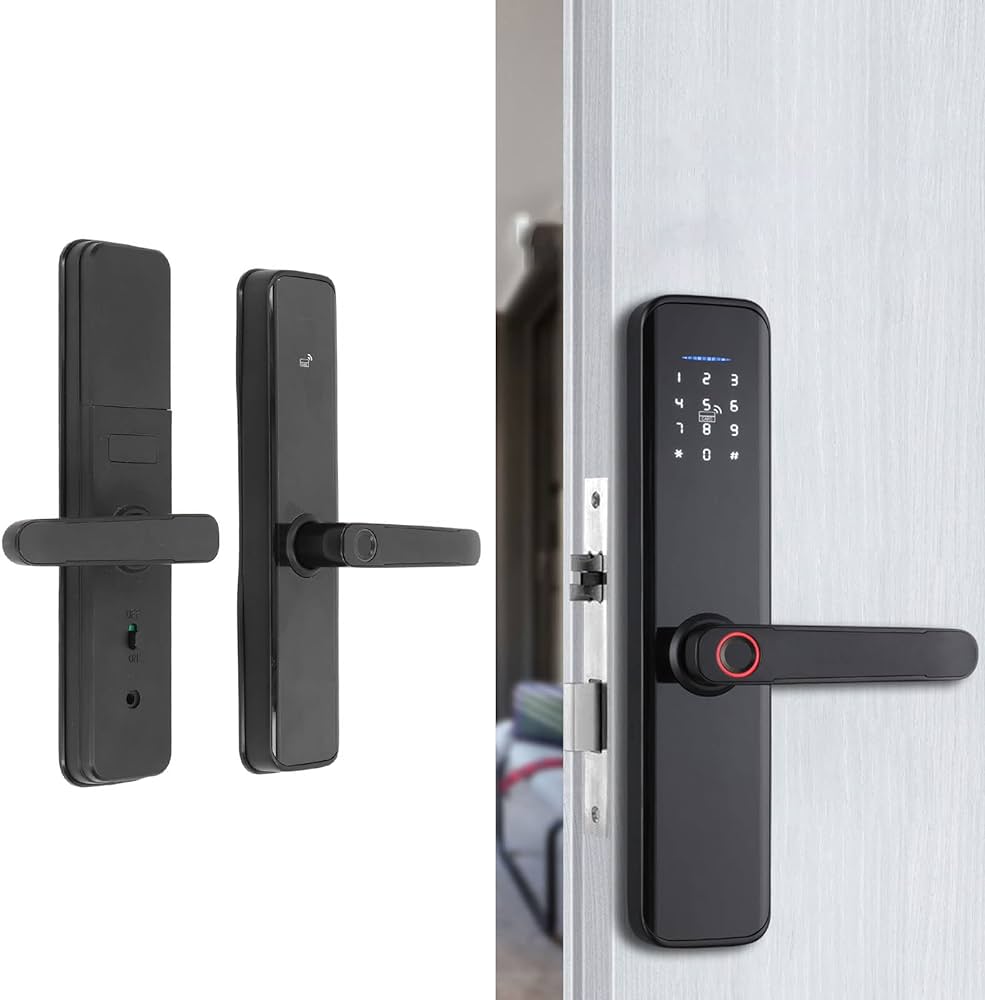Are you tired of constantly monitoring your smartphone’s battery life, only to find it draining faster than you expected? Smart locks, touted for their convenience and security, might be the culprit behind your device’s dwindling power. But before you jump to conclusions, let’s explore the intricate relationship between smart locks and battery usage. Understanding the factors at play could shed light on how to strike a balance between safeguarding your home and preserving your device’s battery life. Check Smart Lock in Hyderabad, Gurgaon and Delhi
Common Causes of Battery Drain
- If your smart lock is draining battery faster than expected, several common causes may be at play. One significant factor to consider is app usage. Smart locks often rely on companion apps to function, and if these apps are constantly running in the background or performing frequent updates, they can contribute to increased battery consumption. To mitigate this issue, you should check your app settings and permissions to ensure that only essential functions are enabled, reducing unnecessary background activity.
- Another crucial element to examine is the screen brightness of your smart lock. Higher screen brightness levels require more power to maintain, leading to faster battery drainage. Adjusting the brightness settings to a more moderate level can help conserve battery life significantly. It’s advisable to find a balance between visibility and energy efficiency to optimize the performance of your smart lock without sacrificing battery longevity.

Impact of Connectivity on Battery Life
- Connectivity plays a crucial role in determining the battery life of your smart lock. The impact of connectivity on battery performance is significant, as the constant communication required between the smart lock and its connected devices can drain the battery more quickly.
- When your smart lock is constantly connected to Wi-Fi or Bluetooth to communicate with your smartphone or other devices, it consumes energy to maintain this connection. The frequency and strength of the connection also influence how much power is used. Stronger signals require less power, while weaker signals demand more energy to maintain connectivity.
- Additionally, if your smart lock is constantly searching for a connection due to poor signal strength or network issues, it will further drain the battery. To optimize battery life, ensure that your smart lock is within a reasonable range of the connected device and that the signal strength is adequate. Regularly monitoring connectivity settings and ensuring efficient network connections can help prolong the battery life of your smart lock.
Best Practices for Battery Optimization
- To optimize the battery life of your smart lock, implement efficient power-saving strategies through careful management of connectivity settings and network connections. Battery saving tips can significantly extend the lifespan of your smart lock’s battery.
- Start by adjusting the auto-lock feature to a longer time interval, reducing the frequency of motor usage, and thereby conserving power. Furthermore, consider disabling unnecessary features like LED lights or sound notifications, which can drain the battery unnecessarily.
- Implement power management strategies by keeping your smart lock’s firmware up to date, as updates often include enhancements for battery optimization. Additionally, consider using low-power connectivity options like Bluetooth Low Energy (BLE) instead of traditional Bluetooth for communication with your smart lock.
- Monitoring the battery level regularly and charging it when needed can help prevent unexpected power drainage. By following these battery optimization practices, you can ensure that your smart lock operates efficiently while maximizing its battery life.
Understanding Battery Saving Features
- Consider enabling energy-efficient modes on your smart lock to enhance battery longevity and optimize performance. Power management is crucial in ensuring your smart lock functions optimally while conserving energy. Smart locks often come with features that allow you to customize power settings to suit your needs. Look for options such as low-power mode or sleep mode, which can significantly reduce energy consumption when the lock isn’t in active use.
- Energy conservation is key to prolonging the battery life of your smart lock. By adjusting settings to minimize power usage during inactive periods, you can extend the time between battery replacements or recharges. Some smart locks offer advanced energy-saving functionalities like motion detection to activate the lock only when necessary, further enhancing efficiency.
- Understanding how to utilize these battery-saving features effectively can make a notable difference in the overall performance and longevity of your smart lock. Regularly monitoring and adjusting power settings based on your usage patterns can help maximize the efficiency of your smart lock while minimizing unnecessary battery drain.
Balancing Security and Battery Efficiency
- To optimize both the security of your smart lock and its battery efficiency, it’s crucial to strike a balance between power-saving features and robust access controls. When considering security measures, such as encryption protocols and authentication processes, it’s essential to evaluate their impact on energy consumption. While stringent security measures enhance protection, they can also lead to increased energy usage. Finding the right equilibrium between security and energy efficiency is key.
- Implementing advanced security protocols, like two-factor authentication and encryption, can enhance the protection of your smart lock but may contribute to higher energy consumption. However, by fine-tuning these security measures and opting for energy-efficient options, you can maintain a secure system without compromising battery life significantly.
- Moreover, ensuring that your smart lock’s security features are optimized for efficiency can help mitigate excessive energy drain. Regularly updating firmware, optimizing settings, and utilizing energy-saving modes can contribute to balancing security and battery efficiency effectively. By carefully selecting and configuring security measures, you can achieve a harmonious blend of protection and optimal energy management in your smart lock system.
Conclusion
In conclusion, while smart locks may contribute to battery drain, proper optimization can help mitigate this issue. By understanding common causes of battery drain, managing connectivity, and utilizing battery saving features, users can strike a balance between security and battery efficiency. Following best practices and staying informed on battery optimization techniques can help ensure a smooth and reliable experience with smart lock technology.